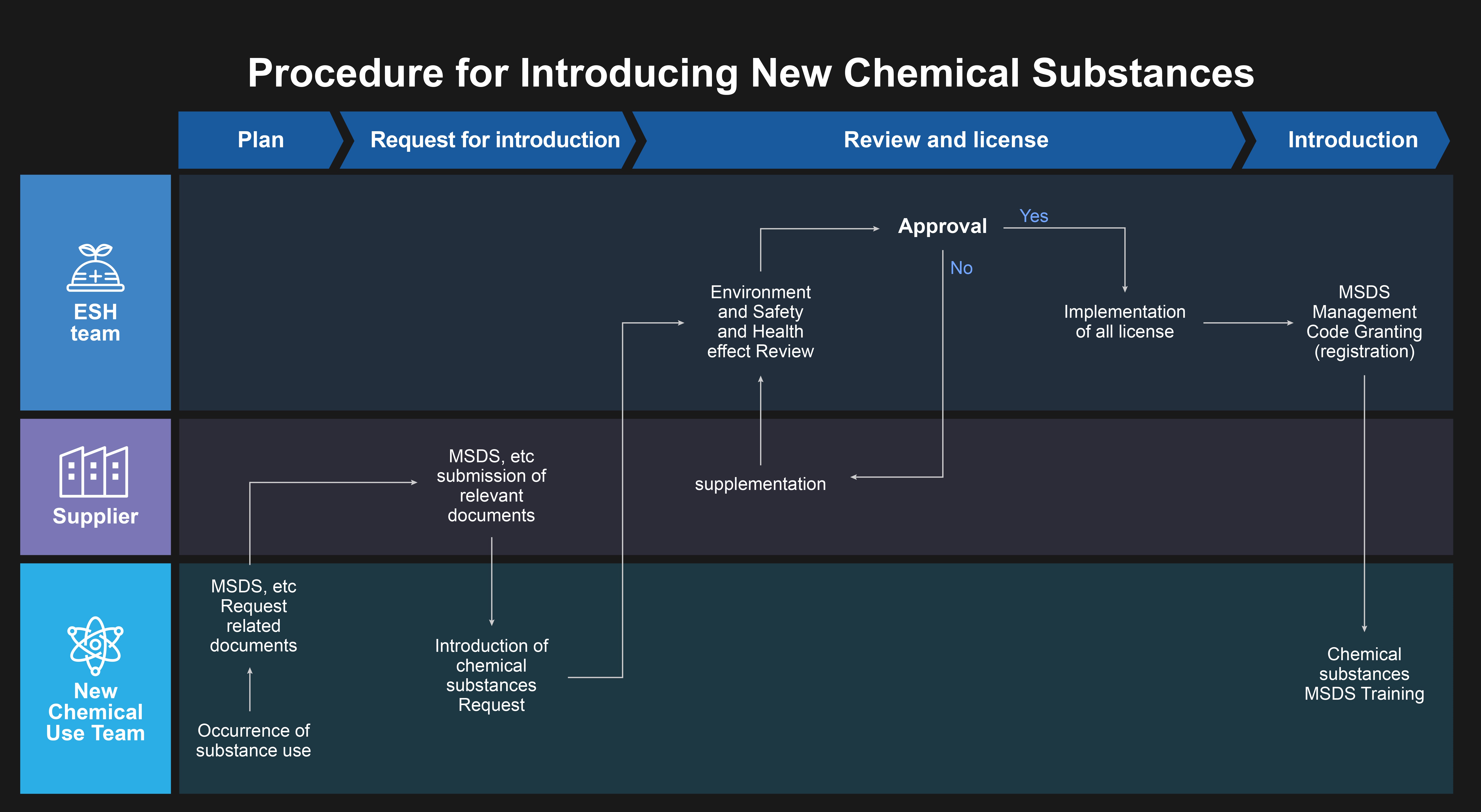

Aligned with targets set by the Korean government, we aim to reduce GHG emissions by 40% from a 2018 baseline by 2030. We are pleased to report that, as of 2024, we have reduced GHG emissions by 51% against our 2018 figures, surpassing the Korean government’s target of a 40% reduction by 2030.
We will continue our GHG emission reduction efforts with the aspiration of accelerating our journey to carbon neutrality by 2050. Our GHG emissions data are submitted annually to Korea’s Ministry of Environment, following third-party verification.
Board oversight and responsibility for climate change
Our Board of Directors (our “Board”) fully understands its duties to navigate the challenges presented by climate change, social injustice, inequality and numerous other issues that are fundamental to our success and sustainability. Our Board’s Risk Committee oversees the objectives, goals, strategies and initiatives concerning ESG matters and the management of associated risks, while the entire Board reviews our ESG integration and disclosure on a quarterly basis.
Climate risk and opportunities
We conduct regular risk assessments using the business continuity planning process to analyze our vulnerability to climate-related impacts and other unexpected crises, disasters and events. To prepare for these impacts and events, we have established an emergency response procedure, which is regularly updated and evaluated. Our business continuity planning process and emergency response procedure are implemented as a part of our risk assessment, covering our exposure to physical climate risks.
Process of identifying risks
We maintain a detailed business continuity system and various operational processes that will enable us to address unexpected crisis situations that threaten our organization. In doing so, we are meeting our obligations towards the safety of our employees and the protection of our assets, as well as our responsibilities towards our stakeholders, including customers, suppliers, shareholders and the wider community, as outlined in our business continuity plan.
According to this plan, we conduct a qualitative analysis every year to identify potential and unexpected risk factors, grouping them into six categories to assess the likelihood and impact of those risks. We then develop countermeasures and action plans for each identified risk category, for example, ‘Environmental’, which encompasses various climate-related scenarios.
Assigning risk priorities
As part of this process, we assign ‘probability’ and ‘impact’ values for each risk category. By multiplying the two numbers together, we arrive at an overall ‘risk rating’, which determines our risk-related priorities as an organization.
Current risk priorities
We acknowledge that severe weather events and natural disasters, such as typhoons, earthquakes, floods and electrical storms, can significantly impact our operations. Some of these events can lead to fires, which we define as one of the most severe environmental risks we face. Also, as global warming accelerates, heatwaves and periods of extremely cold weather become more frequent and severe. Climatic events such as these can impact the supplies of electrical power, gas and water, resulting in interruptions to our operations.
Based on the risk-rating process outlined above, we have identified the following set of priorities, and strive to monitor and manage them accordingly. We have incorporated these physical risks into our business continuity planning across the organization:
- Operational disruption from fire;
- Interruption caused by loss of electrical power, gas and water supply;
- Damage to IT infrastructure, potentially causing data loss; and
- Shortage of materials.
While we strive to mitigate the risks presented by climate change, we are also keenly aware of the business opportunities created by the new drive towards sustainability among our customers and also consumers more broadly.
Climate-related opportunities
We endeavor to mitigate, and adapt to, climate change though various means, including developing new products and services, accessing new markets, and building resilience along the supply chain. Detailed information about our efforts in this area can be found under the “Opportunities in clean tech” section on the Environment page, and the “Supply chain management” section on the Social page of our website.


